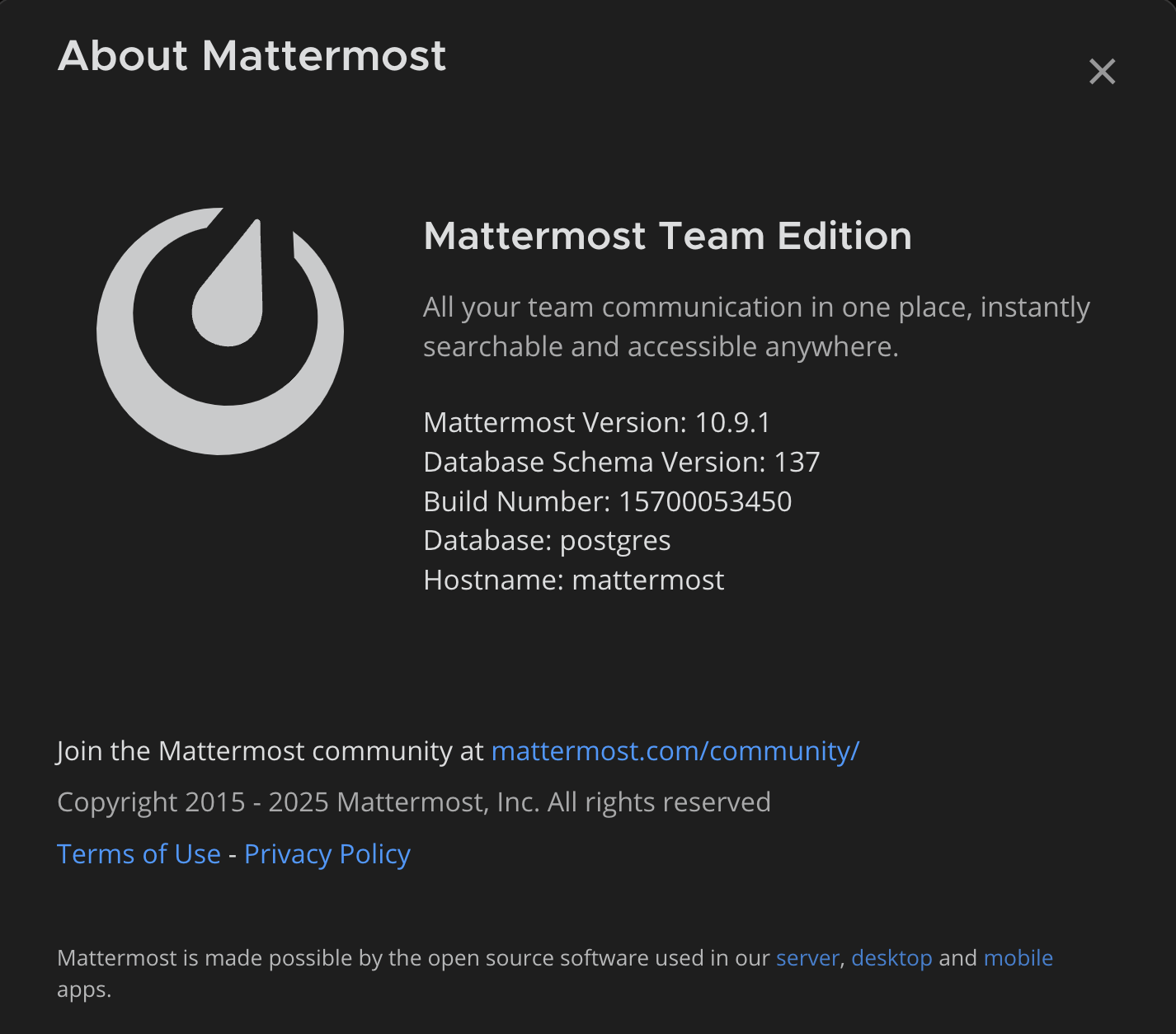Migrating Mattermost from MySQL to PostgreSQL: A Step-by-Step Guide
If you’re running Mattermost on MySQL, it’s time to plan a move—Mattermost is officially ending MySQL support. While this might feel like a hassle, switching to PostgreSQL brings real benefits: better performance, improved scalability, and ongoing support. There isn’t a simple, official step-by-step guide from Mattermost for this migration. But don’t worry—this guide will walk you through the process, making it as smooth as possible!

In this step-by-step guide, you’ll learn how to:
- Identify your current MySQL configuration
- Prepare your databases
- Migrate data using official tools
- Switch Mattermost to use PostgreSQL
- Back up and restore PostgreSQL data
Step 0: Locate Your Current MySQL DSN
To get started, locate your current MySQL DSN (Data Source Name). It’s stored in your Mattermost config file:
/opt/mattermost/config/config.jsonLook for the following section:
"SqlSettings": {
"DriverName": "mysql",
"DataSource": "mysqluser:your_mysql_password@tcp(localhost:3306)/mattermost?charset=utf8mb4,utf8&writeTimeout=30s&readTimeout=30s"
}Take note of this value; you’ll use it with migration-assist and pgloader. Check the installation guide of migration-assist and pgloader
Step 1: Backup Your MySQL Database
# Export the current MySQL database into an SQL dump file
mysqldump -u mysqluser -p --single-transaction mattermost > mattermost_backup.sqlThis backup ensures you can roll back if something fails during migration.
Step 2: Fix MySQL Schema with migration-assist
Download the migration-assist tool and run:
# Normalize and clean MySQL data for better compatibility with PostgreSQL
./migration-assist mysql "mysqluser:your_mysql_password@tcp(localhost:3306)/mattermost?charset=utf8mb4,utf8&writeTimeout=30s&readTimeout=30s" \
--fix-artifacts --fix-unicode --fix-varcharThis tool corrects charset issues, removes legacy artifacts, and prepares the schema.
Step 3: Set Up PostgreSQL for Mattermost
First, switch to the postgres user and create a dedicated role for Mattermost:
# Create a new PostgreSQL user (role) with login privileges
sudo -u postgres psql -c "CREATE ROLE mmuser WITH LOGIN PASSWORD 'your_secure_password';"
# Allow mmuser to create databases if needed (optional but useful)
sudo -u postgres psql -c "ALTER ROLE mmuser CREATEDB;"Now create the database:
# Create the Mattermost database and assign mmuser as the owner
sudo -u postgres createdb -O mmuser mattermost
# Grant mmuser full access to the public schema
sudo -u postgres psql -d mattermost -c "ALTER SCHEMA public OWNER TO mmuser; GRANT ALL ON SCHEMA public TO mmuser;"Step 4: Prepare PostgreSQL Schema with migration-assist
# Apply schema migrations on the new PostgreSQL database
./migration-assist postgres "postgres://mmuser:your_secure_password@localhost:5432/mattermost?sslmode=disable" \
--run-migrations --mattermost-version="10.8.3"Replace the version with your actual Mattermost version. This prepares the PostgreSQL schema to match the app’s expectations.
Step 5: Transfer Data Using pgloader
Create a file named load.load:
LOAD DATABASE
FROM mysql://mysqluser:your_mysql_password@localhost:3306/mattermost
INTO postgresql://mmuser:your_secure_password@localhost:5432/mattermost
WITH include no drop,
create no tables,
preserve index names,
batch rows = 1000,
workers = 8,
concurrency = 4
SET work_mem to '256MB',
maintenance_work_mem to '512 MB'
ALTER SCHEMA 'mattermost' RENAME TO 'public'
CAST type datetime to timestamptz
drop default drop not null using zero-dates-to-null,
type date drop not null using zero-dates-to-null,
type decimal when (= precision 20) to numeric,
type longtext to text,
type mediumtext to text,
type tinyint when (= precision 1) to boolean
;Now run:
# Use pgloader to copy data from MySQL to PostgreSQL using the cleaned schema
pgloader load.loadThis step migrates the actual data.
Step 6: Update Mattermost Configuration
Edit your Mattermost config file:
# Open Mattermost's configuration
vim /opt/mattermost/config/config.jsonUpdate this section:
"SqlSettings": {
"DriverName": "postgres",
"DataSource": "postgres://mmuser:your_secure_password@localhost:5432/mattermost?sslmode=disable&connect_timeout=10"
}Save and exit.
Step 7: Restart Mattermost
# Restart the Mattermost service to begin using PostgreSQL
sudo systemctl restart mattermostYour Mattermost server should now be running on PostgreSQL.
Step 8: PostgreSQL Backup and Restore
Backup
If you need to backup your postgresql database, you can follow these steps.
# Create backup directory and assign correct permissions
sudo mkdir -p /opt/backups
sudo chown postgres:postgres /opt/backups
# Dump the PostgreSQL database in custom format
sudo -u postgres PGPASSWORD='your_secure_password' pg_dump -h localhost -U mmuser -d mattermost -F c -f /opt/backups/mattermost.bakRestore
Just in case you want to restore an old back, here is how you can do it.
# Create a new blank database to restore into
sudo -u postgres createdb -O mmuser mattermost
# Restore from the backup file
sudo -u postgres PGPASSWORD='your_secure_password' pg_restore -h localhost -U mmuser -d mattermost /opt/backups/mattermost.bakFinal Thoughts
Migrating Mattermost from MySQL to PostgreSQL is now becoming mandatory. This guide provides the cleanest and most reliable path to perform the migration using official tools.
Important tips:
- Always test the migration on a staging server before deploying to production.
- Verify third-party integrations after the migration.
- Use PostgreSQL-native monitoring tools post-migration for optimal health checks.
Good luck!